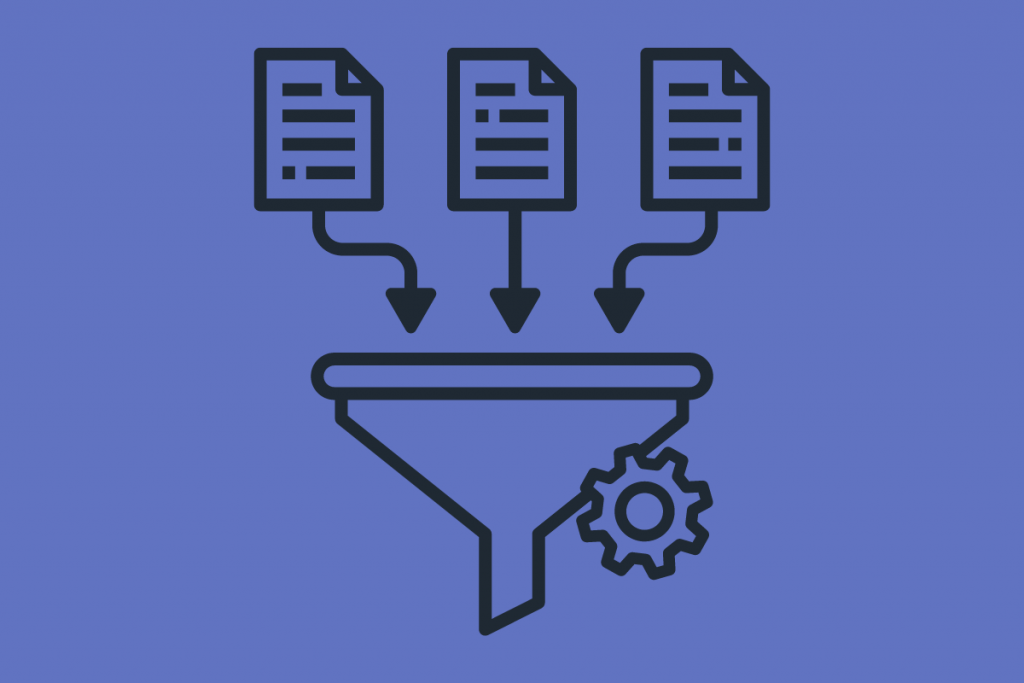How to Conduct a Content Audit for SaaS Companies: 7 Steps
Is your SaaS content not performing? Regular content audits are key to make sure the content you’ve created is delivering results.
Content audits will help you get rid of the clutter, update existing content, and create new pieces to outperform competitors.
In this post, you’ll learn how to conduct a successful SaaS content audit and increase performance with existing and new content.
What is a Content Audit?
A content audit is the process of reviewing the content on your website to see how well it’s performing and identify areas for improvement. This includes analyzing metrics like traffic, engagements, and conversions.
You’ll also assess the quality and relevance of your content. For example checking for outdated information, broken links, and inconsistencies in tone or style.
Perform audits regularly to keep your SaaS website fresh and aligned with your goals. You can do this every three months, every six months, or once a year, depending on how big your website is and how much content you have.
An audit can include website content like home and product pages, as well as blogs, white papers, etc.
To sum it up, regular content audits help you understand what’s working on your site and what isn’t so you can make improvements and keep your content effective and relevant.
Why are Content Audits Important for SaaS Businesses?
Here’s why every SaaS company should conduct regular content audits:
1. Improve user engagement
A content audit helps identify which content connects best with your audience based on interactions, comments, shares, etc. Understanding what works lets you create more engaging content that keeps users interested and encourages them to explore your SaaS offerings further.
2. Improve SEO performance
Content audits are essential for monitoring and improving SEO performance. You can boost your rankings by continuously optimizing existing content for relevant keywords and fixing technical SEO issues. Higher rankings result in increased organic traffic, which can be converted into leads and customers.
3. Identify content gaps
A content audit will help you identify gaps and improve your SaaS content marketing strategy. By identifying missing topics or underrepresented areas, you can develop new content that addresses these gaps, making sure you meet your audience’s changing needs.
4. Maintain content relevance
The SaaS landscape is constantly changing. Regular content audits allow you to update outdated information and make sure your content reflects the latest industry trends and product features. This builds trust with your audience and positions your company as a reliable source of information.
5. Optimize conversion rates
By analyzing how different content pieces perform in terms of conversions, you can optimize your content to better guide users toward signing up for a trial, demo, or subscription. This can significantly increase your conversion rates and drive business growth.
6. Maximize content ROI
Creating content requires time and resources. Regular SaaS content audits help maximize your return on investment (ROI) by making sure existing content performs well. By repurposing or updating high-performing content, you can save resources while maintaining a strong digital presence.
Regular SaaS Content Audits Can Help:
- Increase organic traffic.
- Generate more leads.
- Convert those leads into customers.
- Increase content ROI.
- Improve user engagement.
According to SEMrush’s State of Content Marketing Report, 61% of the most successful companies in content marketing perform content audits at least twice a year.
How to Conduct a SaaS Content Audit: Practical Checklist
- Define your goals.
- Do an inventory of existing content.
- Analyze content performance.
- Check content quality and relevance.
- Identify content gaps.
- Implement content changes.
- Keep measuring and improving.
1. Set Goals
The first step is to define what goals you want to achieve with your SaaS content audit, for example, increased user engagement, organic traffic, or conversion rates.
You’ll also want to identify relevant KPIs for tracking the progress, like:
- Time on page: Measure the average time users spend on your content pages. A higher average time indicates better engagement.
- Bounce rate: Monitor the percentage of visitors who leave your site after viewing only one page. A lower bounce rate indicates higher engagement.
- Keyword rankings: Monitor the ranking of target keywords in search engine results pages (SERPs). Improved rankings should correlate with increased traffic.
- Lead generation: Measure the number of leads generated from your content, this can include newsletter sign-ups or demo requests.
2. Do a Content Inventory
Conducting an inventory of existing content is a critical step in your SaaS content audit.
Gather data
Start by gathering all content data from your SaaS website. You can use content audit tools like Screaming Frog, Google Analytics, or SEMrush to compile a list of every piece of content on your site—like blog posts, landing pages, white papers, and case studies.
Create a spreadsheet
Next, you’ll need to create a spreadsheet to organize the data. Include basic information about each piece of content—URL, publishing date, bounce rate, average time users spend on the page, etc. This information will help you understand how your existing content performs.
Once you have all your data organized in the spreadsheet, you can start to check for patterns and identify areas for improvement.
3. Analyze Content Performance
An essential part of the SaaS content audit is to pinpoint which content pieces are performing well and which aren’t.
SEO metrics
Track how many organic visitors each piece of content gets. This indicates how well the content is resonating with your audience and also how well it ranks in search engines. Make sure your content is optimized with the right words and phrases that people are searching for. Review headings, image descriptions, and internal linking structures.
Examples of SEO metrics:
- Organic traffic.
- Keyword rankings.
- Backlinks.
Engagement metrics
Measure how long visitors stay on the page. This tells you if people are interested in what they find. Also, check if visitors interact with your content, leaving comments or sharing it with others. High engagement shows that your content is valuable and engaging.
Examples of engagement metrics:
- Average time on page.
- Comments.
- Shares.
Conversion metrics
Check if your content is encouraging people to do what you want, like signing up for emails, downloading a guide, or buying a product. This metric helps measure how effective your content is at turning visitors into customers or leads.
Examples of conversion metrics:
- Conversion rate.
- Downloads.
- Purchases.
By looking at these metrics, you’ll get an overview of your content performance. So you know which piece of content to update, promote, or even remove.
4. Check Content Quality and Relevance
Monitoring relevance and quality is a key element of the SaaS content audit that’s often overlooked.
Content relevance
When auditing your content, you need to make sure that each piece remains relevant to your audience and aligns with your current SaaS offerings. This includes updating outdated statistics, facts, or references—as well as incorporating new industry trends.
By keeping your content relevant, you demonstrate your company’s commitment to providing up-to-date and valuable information to your audience.
Content quality
Evaluating the quality of your content is needed to maintain consistency in brand messaging and user experience.
Pay attention to the tone of voice; is it consistent with your brand’s identity and values? Check for grammatical errors and spelling mistakes. Make sure that the content is engaging and easy to understand for your target audience.
5. Identify Content Gaps
Identifying content gaps is all about analyzing your existing content to identify areas with insufficient or missing information that could better serve your audience.
Analyze audience needs
First, you need to understand your target audience’s preferences, pain points, and interests. Review customer feedback, run surveys, and analyze search queries to identify common themes or questions that your current content does not adequately address.
Conduct competitor analysis
Study your competitors’ content to see what topics they cover that you might have overlooked. Look for gaps where they’re not providing comprehensive information or where you can offer a unique perspective.
Consider the SaaS marketing funnel
Map out your SaaS marketing funnel—from awareness to consideration and decision-making stages. Identify if there are gaps in your content that fail to support potential customers at each stage of their journey.
Also, don’t forget to consider the post-purchase stage, were you need to focus on retaining customers.
6. Implement Changes
At this stage, you should have a good grasp of your existing content and potential areas for improvement.
Let’s implement the insights from your SaaS content audit—by updating, repurposing, and creating new high-quality content assets.
Update existing content
Review the findings from your audit and make necessary revisions to your current content. Update outdated content, correct any errors, and improve the clarity and relevance of the content. Improve headlines, meta descriptions, and other SEO elements to better align with current search trends. By updating your content, you can keep it valuable and engaging for your audience.
Repurpose existing content
Look for ways to use your existing content in new ways. For example; change a popular blog post into a series of social media posts, turn a webinar into a case study, or combine a few related blog posts into a white paper.
Repurposing helps you reach new audiences and make your valuable content last longer without having to start from scratch.
Create new content
Content creation is one of the last steps. Focus on topics that are important to your audience but have yet to be adequately covered. By creating fresh and effective content, you can attract more visitors and strengthen your brand’s authority in the industry.
7. Follow Up and Improve
Lastly, you need to continue monitoring the performance of your content to understand the impact of your efforts.
Give your content some time to perform before you start analyzing—at least three months is recommended, especially if you’re tracking SEO metrics.
Measure and analyze KPIs
Compare the performance metrics before and after implementing changes from the content audit. Look for improvements in traffic, engagement rates, conversions, and keyword rankings.
Adjust strategies
Based on your findings, adjust your content strategies as needed. Double down on tactics that are working well and make corrections to areas that may not be performing as expected. Keep optimizing your content to better meet the needs and preferences of your audience.
Consistently measuring and analyzing the results of your content audit will keep your content effective and your SaaS business competitive.
Keys When Conducting a Content Audit for Your SaaS
To sum it up, regular content audits are essential for SaaS companies that want to maintain a strong online presence and drive long-term growth. By thoroughly reviewing and improving your content, you can make sure it stays relevant, interesting, and in line with your overall business goals.
Embrace content audits as a strategic tool to drive sustained growth in the competitive SaaS market.
Do you need help creating content for your SaaS blog? Message me and let me know what you have in mind.








